After getting spooked by the ADP Employment report on Wednesday, stocks greeted the five year low in Jobless Claims with a buying binge that pushed the S&P 500 ETF (SPY) above its April high. QQQ also erased Wednesday's low and hit a new high for 2013. IWM and MDY continue to lag because they fell short of their April highs. Once again SPY is priced for perfection as we head into today's employment report. Last month's report disappointed and the bond market surged over the last five weeks. The 20+ Year T-Bond ETF (TLT) is saying one thing, but S&P 500 ETF is saying another. TLT says the economy is slipping. SPY says stocks are in good shape and will weather the storm. Both are in uptrends for the moment, but I am not sure how long this positive correlation will last. The charts below show the AD Line and AD Volume Line for the S&P 500. Both are in uptrends with last Friday's low marking short-term support.
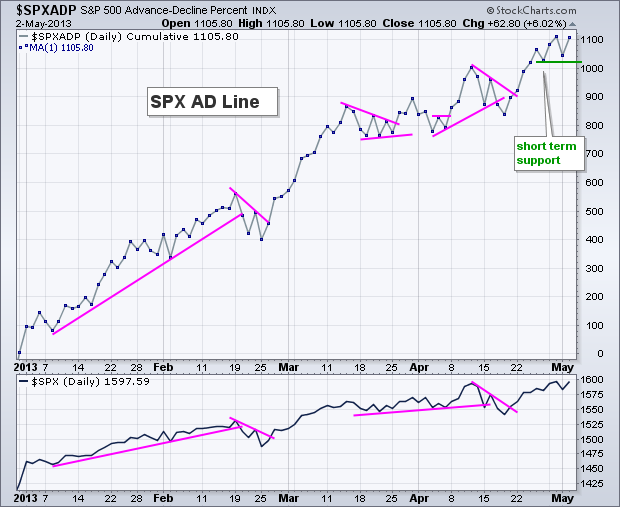

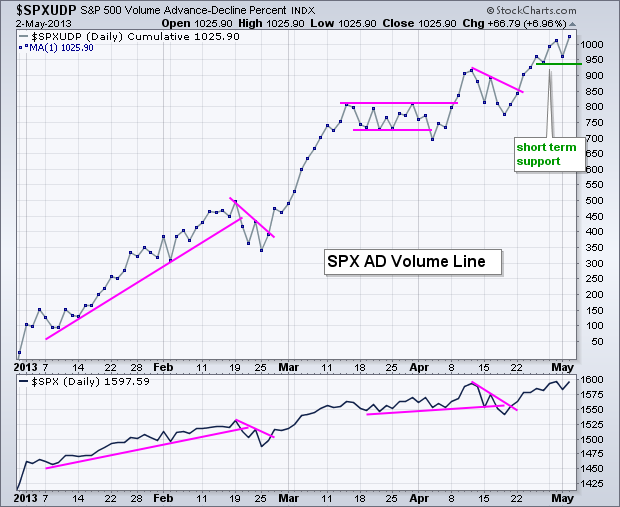
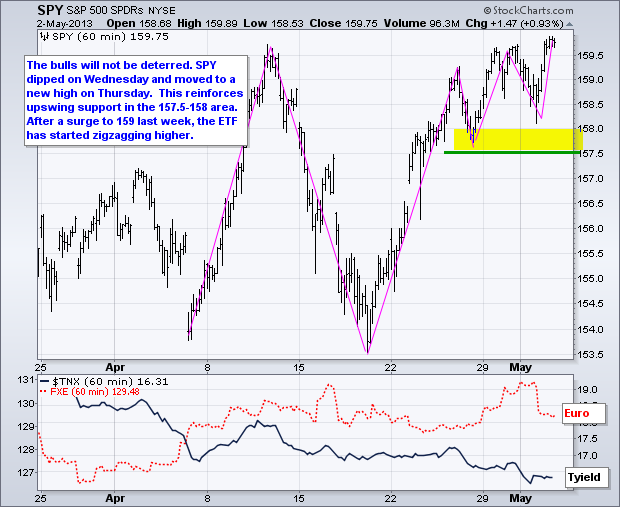
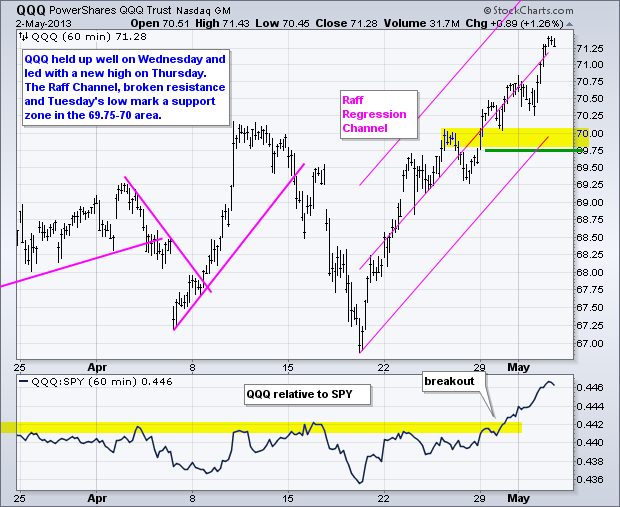

**************************************************************************
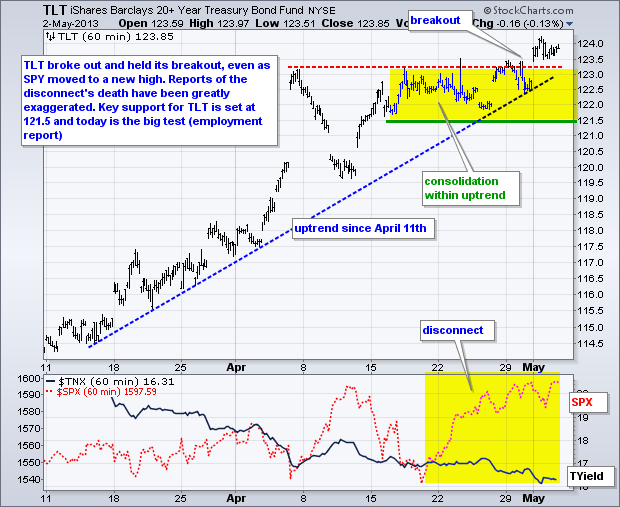
**************************************************************************
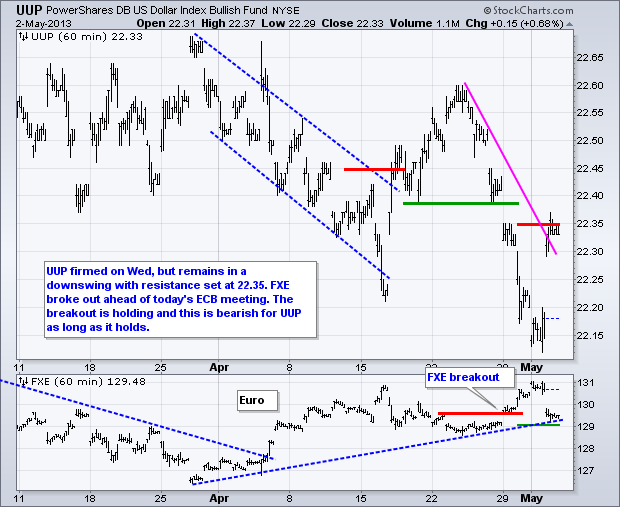
**************************************************************************
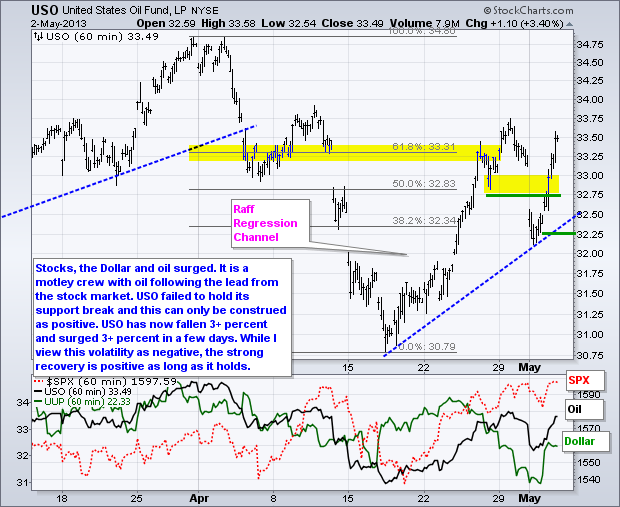
**************************************************************************
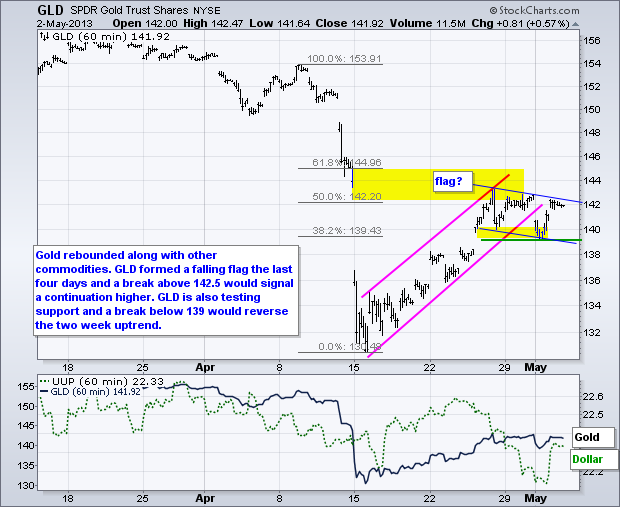
**************************************************************************
Key Reports and Events (all times Eastern):
Fri - May 03 - 08:30 - Employment Report
Fri - May 03 - 10:00 - Factory Orders
Fri - May 03 - 10:00 - ISM Services Index
Charts of Interest: Tuesday and Thursday
This commentary and charts-of-interest are designed to stimulate thinking. This analysis is
not a recommendation to buy, sell, hold or sell short any security (stock ETF or otherwise).
We all need to think for ourselves when it comes to trading our own accounts. First, it is
the only way to really learn. Second, we are the only ones responsible for our decisions.
Think of these charts as food for further analysis. Before making a trade, it is important
to have a plan. Plan the trade and trade the plan. Among other things, this includes setting
a trigger level, a target area and a stop-loss level. It is also important to plan for three
possible price movements: advance, decline or sideways. Have a plan for all three scenarios
BEFORE making the trade. Consider possible holding times. And finally, look at overall market
conditions and sector/industry performance.

About the author:
Arthur Hill, CMT, is the Chief Technical Strategist at TrendInvestorPro.com. Focusing predominantly on US equities and ETFs, his systematic approach of identifying trend, finding signals within the trend, and setting key price levels has made him an esteemed market technician. Arthur has written articles for numerous financial publications including Barrons and Stocks & Commodities Magazine. In addition to his Chartered Market Technician (CMT) designation, he holds an MBA from the Cass Business School at City University in London.
Learn More





